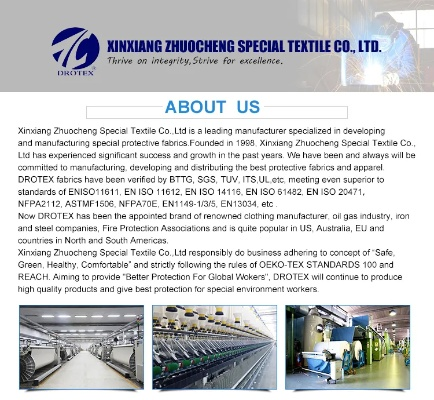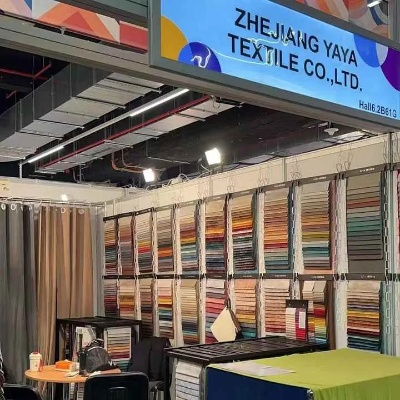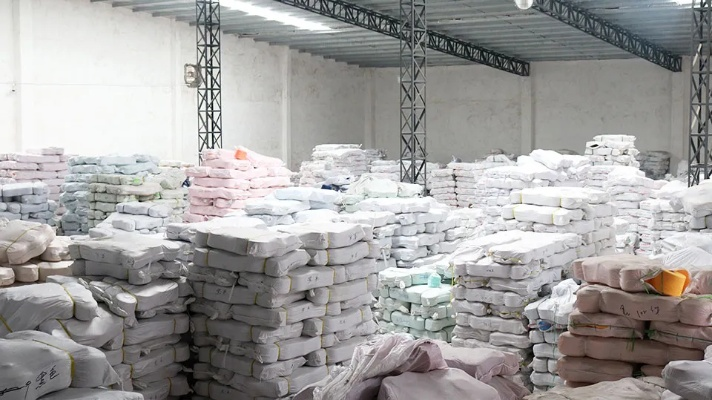Emerging Technologies in Textile Antimicrobial Treatments
Textiles have long been a crucial aspect of human life, providing warmth, comfort, and protection. However, the increasing presence of bacteria in textiles has led to concerns about health risks associated with their use. In response to this issue, emerging technologies in textile antimicrobial treatments are being developed to enhance the safety and hygiene of clothing.,One such technology is the use of silver nanoparticles, which have been shown to be effective against a wide range of bacteria and viruses. These nanoparticles can be incorporated into fabrics through various methods, including printing, spraying, and embedding. The resulting textiles exhibit excellent antibacterial properties that can help reduce the spread of infections caused by bacteria.,Another promising technology is the use of natural compounds, such as tea tree oil and neem oil, to create antimicrobial finishes on textiles. These compounds have been shown to have strong antibacterial properties that can help protect against bacterial growth and infection.,Overall, the development of emerging technologies in textile antimicrobial treatments holds great promise for improving the safety and hygiene of clothing. As these technologies continue to evolve, they will become increasingly important in addressing the growing concern over bacterial contamination in textiles.
Introduction: In the realm of textiles, the need for enhanced durability and hygiene has led to a surge in research and development towards innovative antimicrobial treatments. The quest for healthier living environments, coupled with global concerns about the spread of infectious diseases, has propelled the field of textile science forward. This presentation will explore some of the cutting-edge technologies currently being explored by researchers worldwide, as well as their potential applications in the textile industry.
Antimicrobial Finishes: One of the most promising areas in textile antimicrobial treatments is the development of finishes that can inhibit or kill bacteria and fungi on fabric surfaces. These finishes are often applied using a variety of techniques such as physical barriers (like nanoparticles), chemical agents (like quaternary ammonium compounds), or biocides (like plant extracts).
Table 1: Examples of Antimicrobial Finishes | Finish Type | Application | Preferred Properties | |-----------|------------|-------------------| | Chemical | Broad-spectrum antibacterial | Effective against a wide range of bacteria | | Biocide | Specific antifungal properties | Can target specific microbial species | | Nanoparticles | Physical barrier | Highly effective against certain types of bacteria | | Plant extracts | Biocidal | Naturally derived and eco-friendly |
Case Study: One example of an innovative antimicrobial finish is the use of silver nanoparticles incorporated into a polyester fabric. This finish has been shown to provide excellent performance against both bacteria and fungi, with minimal impact on the fabric's appearance or comfort. In addition, the silver nanoparticles have been found to be highly durable and resistant to wear and tear.

Advantages and Disadvantages: While these antimicrobial finishes offer significant benefits, they also come with certain drawbacks. For example, some finishes may require harsh chemicals or high temperatures during manufacturing, which could compromise the fabric's quality or cause environmental concerns. Additionally, some finishes may not be entirely effective against all types of bacteria or fungi, necessitating regular maintenance or replacement.
Future Trends: As technology continues to advance, we can expect to see even more sophisticated antimicrobial treatments emerge. For instance, researchers are exploring the use of quantum dots and other advanced materials to create more effective and eco-friendly finishes. Additionally, there is growing interest in developing finishes that can provide long-lasting protection against multiple pathogens without compromising the fabric's performance or aesthetic appeal.
Conclusion: The textile industry has a long history of innovation, and the push towards safer and healthier living spaces is only set to continue. As new antimicrobial treatments are developed and implemented, it will be interesting to see how they evolve over time and how they integrate into our daily lives. Whether through personal care products, home furnishings, or industrial settings, the continued advancement of antimicrobial textile treatments will undoubtedly play a crucial role in shaping our future.
随着现代生活节奏的加快,人们对衣物舒适度和健康性的要求日益提高,纺织品抗菌整理新技术作为一种创新的技术手段,正在逐渐改变我们对衣物舒适度和健康性的认知,本文将深入探讨纺织品抗菌整理新技术的发展现状、应用案例以及相关技术要点。
纺织品抗菌整理新技术概述
抗菌整理技术原理
纺织品抗菌整理新技术主要利用特殊的化学处理手段,在纤维表面形成一层抗菌涂层,从而达到抑制细菌生长和繁殖的目的,这种技术主要涉及纳米技术、生物活性剂等高新技术。

应用领域
纺织品抗菌整理新技术广泛应用于服装、家居用品、医疗用品等领域,在服装领域,它可以提高衣物的抗菌性能,减少细菌滋生,提高穿着舒适度,在家居用品领域,它可以提高毛巾、床单等日常用品的抗菌性能,减少细菌传播,在医疗用品领域,它可以提高医疗器械的抗菌性能,保障医疗环境的卫生安全。
抗菌整理新技术案例分析
新型抗菌纤维的生产与应用
某公司研发了一种新型抗菌纤维,采用纳米技术处理纤维表面,形成一层具有抗菌功能的涂层,这种纤维具有出色的抗菌性能和舒适度,广泛应用于服装、家居用品等领域,通过实际应用,该纤维受到了消费者的广泛好评。
抗菌面料在医疗用品中的应用
某医院采用了抗菌面料制作的医疗器械,可以有效减少细菌传播,保障医疗环境的卫生安全,这种面料经过特殊处理,具有出色的抗菌性能和耐用性,受到了广泛认可。
纺织品抗菌整理新技术要点分析

纳米技术的应用
纳米技术是纺织品抗菌整理新技术的核心技术之一,纳米技术可以精确控制纤维表面的微观结构,提高纤维表面的活性位点数量,从而增强纤维的抗菌性能,纳米技术还可以提高纤维的耐久性和舒适度。
生物活性剂的应用
生物活性剂是一种天然或合成的高分子物质,具有抗菌、抗病毒等作用,在纺织品抗菌整理新技术中,生物活性剂可以与纤维表面形成稳定的化学键合作用,从而提高纤维的抗菌性能,生物活性剂还可以提高纤维的柔软度和舒适度。
新技术发展趋势与展望
随着科技的不断进步,纺织品抗菌整理新技术将不断发展和创新,纺织品抗菌整理新技术将更加注重环保、可持续性等方面的发展,纺织品抗菌整理新技术将更加注重个性化、定制化等方面的发展,以满足不同消费者的需求,纺织品抗菌整理新技术还将与物联网、人工智能等技术相结合,进一步提高其应用效果和效率。
纺织品抗菌整理新技术是一种新兴的技术手段,具有广泛的应用前景,它不仅可以提高衣物的舒适度和健康性,还可以提高医疗环境的卫生安全,随着科技的不断进步,纺织品抗菌整理新技术将不断发展和创新,为人们的生活带来更多的便利和健康保障。
Articles related to the knowledge points of this article:
The Future of Fashion:Transforming Plastics into Superior Textiles



